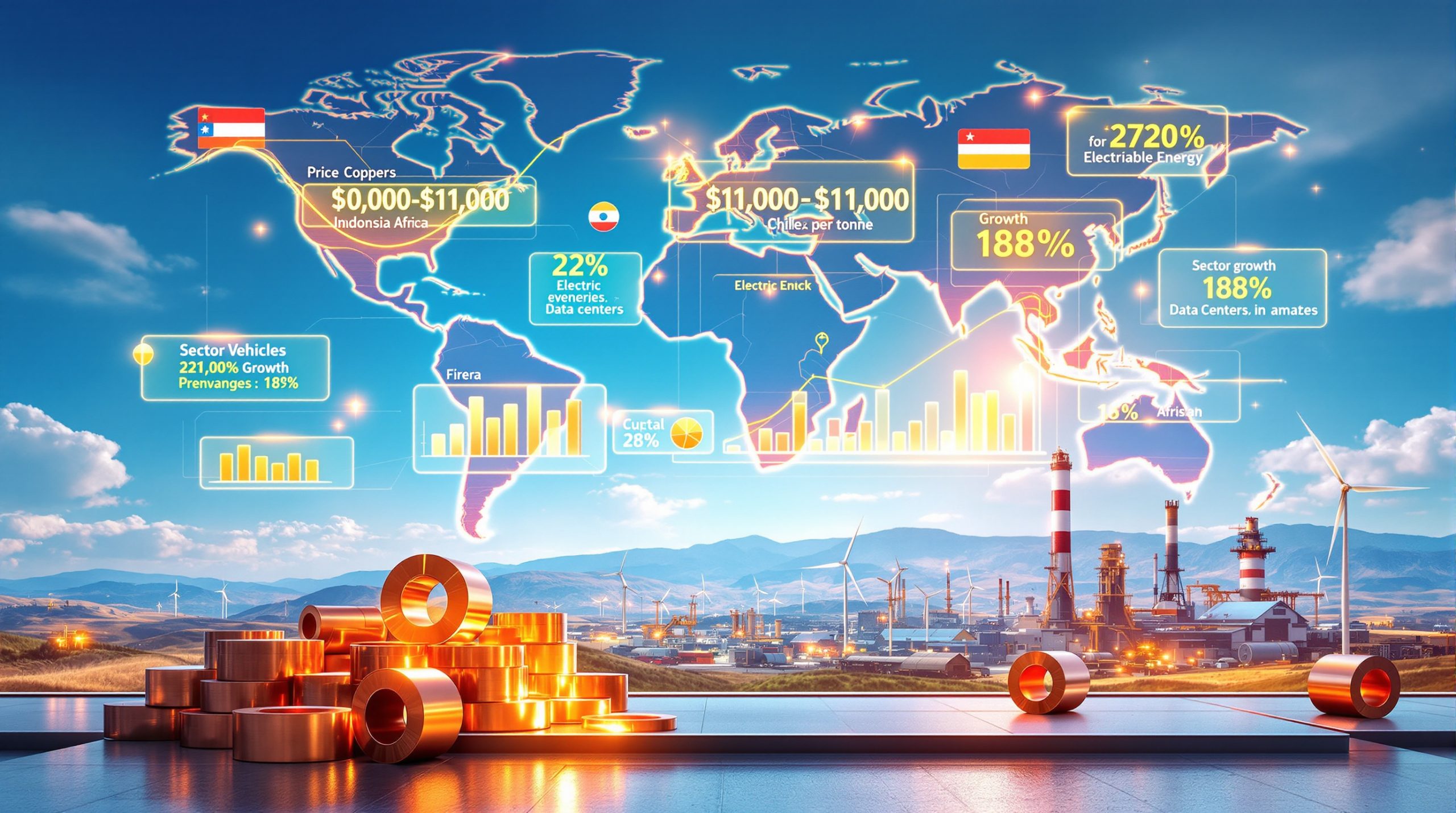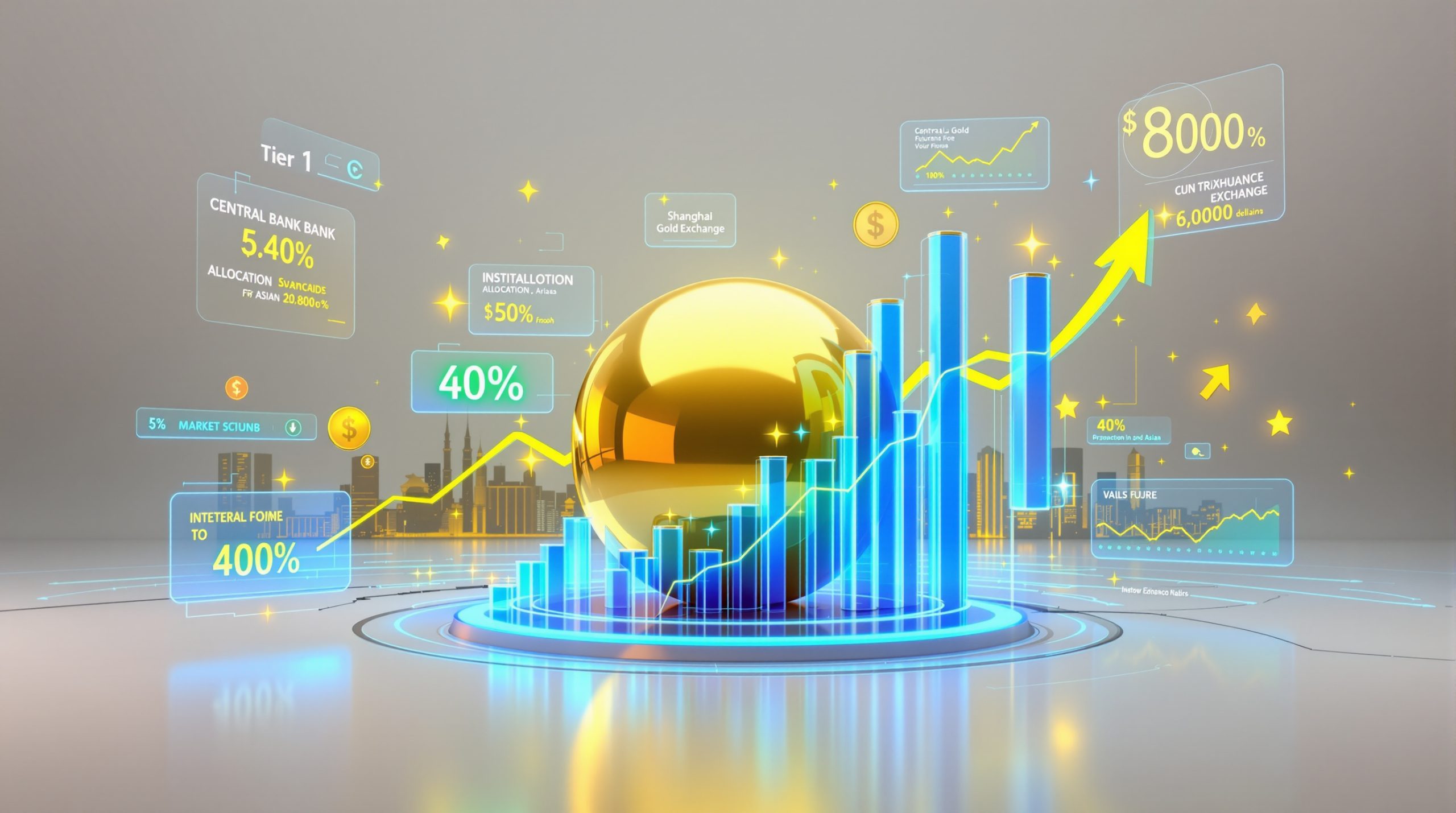What's Driving the Current Silver Supply and Demand Gap?
The silver market is experiencing a remarkable transformation in 2024, with prices breaking through long-established resistance levels and reaching multi-year highs. This surge represents more than just a temporary spike—it signals a fundamental shift in the silver market squeeze dynamics that govern the silver market.
The Dual Nature of Silver Demand
Silver's unique position as both precious metal and industrial commodity creates a powerful demand dynamic that few other materials can match. This dual nature is increasingly driving price momentum as multiple demand factors converge.
Industrial applications are creating unprecedented pressure on available silver supplies. According to the Silver Institute, industrial demand reached 632 million ounces in 2023, representing over 50% of total silver consumption. This figure is projected to grow by at least 5-7% annually through 2026 as new technologies scale up.
The energy transition stands out as a particularly significant driver. Modern solar panels contain approximately 20 grams of silver per panel, with the International Energy Agency projecting solar capacity additions of 375 GW in 2024 alone. This represents approximately 240 million ounces of silver demand from just one sector.
"Silver is experiencing what I call a 'perfect storm' of demand factors. It's needed in record quantities for industrial applications while simultaneously seeing renewed interest as a monetary metal during economic uncertainty." – Industry analyst Keith Neumeyer, First Majestic Silver
Traditional investment demand is strengthening alongside these industrial pressures. The first quarter of 2024 saw silver ETF holdings increase by 15 million ounces, reversing previous outflow trends. Physical silver premiums at major dealers have expanded to 20-30% above spot for popular products, indicating strong retail demand.
Expert forecasts increasingly point to a continued upward trajectory. The average price target among major banking analysts for 2025-2026 has been revised upward to $42-45 per ounce, with some specialists projecting potential moves toward $50 if supply constraints persist.
Recent Price Milestones and Breakout Analysis
Silver has reached the significant $37-38 mark after years of consolidation below $30, representing a crucial technical breakout. This price level had served as resistance dating back to 2013, making the current move particularly significant from a chart perspective.
Technical indicators suggest sustainable momentum beyond $40 is developing:
- The 50-day moving average has crossed above the 200-day moving average, forming a "golden cross" pattern
- Relative Strength Index (RSI) readings have remained below overbought territory despite price increases
- Volume patterns show increasing participation during price advances, indicating institutional involvement
When compared with historical silver patterns, the current breakout shares characteristics with the 2010-2011 period, which eventually saw silver reach nearly $50. However, today's fundamentals appear stronger due to expanded industrial applications and more limited mining capacity.
Market sentiment has notably shifted from cautious to bullish. A recent survey of 120 institutional investors revealed that 68% now maintain positive silver price expectations for the next 12-24 months, compared to just 31% at the beginning of 2023.
How Is the Silver Supply-Demand Gap Widening?
The current silver market is characterized by a growing imbalance between available supply and expanding demand—a gap that shows signs of widening rather than closing in the coming years.
Current Supply Constraints
Limited new mine development over the past decade has created a structural supply challenge. Capital expenditure for primary silver mines declined by approximately 60% between 2012 and 2020, according to industry data. This underinvestment is now manifesting as a production plateau even as prices rise.
Declining silver grades in existing operations compound the problem. Average ore grades have fallen from approximately 500 g/t (grams per ton) in the 1880s to less than 150 g/t today in many major operations. The geological reality is that higher-grade deposits have largely been depleted, requiring more material processing for the same silver output.
A critical factor often overlooked is that silver is primarily produced as a byproduct of other mining operations:
- 75% of silver production comes as a byproduct of lead/zinc, copper, and gold mining
- Only 25% comes from primary silver mines where silver is the main target
- This creates inelastic supply that doesn't quickly respond to silver price increases
Production challenges in major silver-producing regions add further complications. Mexico, Peru, and Chile—which collectively account for over 50% of global mine supply—face varying combinations of:
- Regulatory challenges and permitting delays
- Resource nationalism and tax regime changes
- Labor disputes and workforce shortages
- Water access constraints in arid mining regions
Supply response limitations are exacerbated by long lead times for new projects. The average silver mine takes 8-12 years from discovery to production, creating a significant lag between price signals and supply increases.
Accelerating Demand Factors
Green energy technologies require substantial silver inputs across multiple applications. The photovoltaic sector alone consumed approximately 140 million ounces in 2023, with projections suggesting this could reach 200 million ounces by 2026 as solar deployment accelerates globally.
Solar panel manufacturing represents just one segment of growing demand. Each panel typically contains:
- Silver paste for front-side metallization
- Silver tabbing ribbons for cell interconnection
- Silver-based solder for module assembly
Electric vehicle production is increasing industrial demand through multiple components:
- Battery management systems (silver-based circuits)
- Autonomous driving sensors and controls
- Electrical contacts and switches
- Silver-zinc battery technology in some applications
The electronics sector continues expanding its silver consumption, with each smartphone containing approximately 0.34g of silver, and the average laptop using close to 1.25g. With global production exceeding 1.5 billion smartphones and 300 million laptops annually, this represents significant ongoing demand.
Medical and antimicrobial uses create additional demand sources that weren't significant a decade ago:
- Hospital equipment and surfaces
- Wound dressings and medical textiles
- Water purification systems
- Food packaging and storage applications
Quantifying the Supply-Demand Imbalance
Current annual supply deficit estimates stand at approximately 100-120 million ounces for 2024, representing about 10% of total market demand. This deficit is projected to widen to 150-200 million ounces annually by 2026-2028 based on current demand trends and known mining projects.
Above-ground inventory depletion rates have accelerated. COMEX registered silver inventories declined from over 150 million ounces in 2020 to approximately 35 million ounces in early 2024—a 77% reduction in available warehouse stocks. This trend suggests physical tightness is increasing throughout the supply chain.
Investment demand is amplifying physical market tightness. The Silver Institute reports that combined ETF and physical investment demand reached 329 million ounces in 2023, a figure expected to grow as price momentum attracts additional capital flows.
This supply and demand gap is projected to widen through 2025-2030 due to three primary factors:
- Limited mine supply growth (projected at 1-2% annually)
- Accelerating industrial demand (growing at 5-7% annually)
- Increasing investment interest as prices trend higher
Why Is Silver Gaining Attention as Both Precious and Industrial Metal?
Silver's unique dual role in the modern economy creates a distinctive value proposition unlike most commodities or investment assets.
The Precious Metals Perspective
Silver's monetary history spans thousands of years, with archaeological evidence of silver coins dating back to ancient Greece around 550 BCE. This long-standing use as money established silver's role as a store of value across civilizations and centuries.
The correlation with gold during economic uncertainty remains a key attribute. Historical data shows silver tends to follow gold's direction but with greater magnitude—typically moving 1.5-2.5 times the percentage change of gold during significant market moves. This relationship has strengthened during the post-pandemic period.
"Silver's precious metal component gives it a monetary floor during market stress, while its industrial demand provides a utilitarian ceiling that rises with technological advancement." – Precious metals strategist David Morgan
Inflation hedge properties are particularly relevant in the current environment. Analysis of silver performance during periods of above-trend inflation (1970s, early 2000s, 2021-present) shows consistent outperformance relative to financial assets. When real interest rates (nominal rates minus inflation) turn negative, silver typically benefits from capital flows seeking tangible assets.
Portfolio diversification benefits for investors include:
- Negative correlation with traditional financial assets during market stress
- Positive skew characteristics (larger positive than negative returns)
- No counterparty risk when held in physical form
- Liquidity characteristics superior to most tangible assets
The Industrial Metal Angle
Silver is an essential component in renewable energy technologies, with each gigawatt of solar capacity requiring approximately 500,000 ounces. As global solar installations accelerate—projected to exceed 4,500 GW of cumulative capacity by 2030—this represents structural demand growth that didn't exist during previous silver bull markets.
The metal's irreplaceable properties in electronics manufacturing include:
- Highest electrical conductivity of all elements
- Superior thermal conductivity
- Excellent solderability and bonding characteristics
- Reflective properties critical for certain applications
Growing industrial applications span multiple sectors beyond solar and electronics:
- Water purification (silver nanoparticles)
- Medical equipment and antimicrobial surfaces
- Nuclear control rods (silver-indium-cadmium alloys)
- Specialized glass coatings and mirrors
- Automotive sensors and electrical contacts
Limited substitution possibilities exist in key technologies due to silver's unique properties. Attempts to reduce silver content in solar cells, for example, have been ongoing for years but face diminishing returns as further reductions impact efficiency and durability. The cost-benefit analysis still favors silver even at higher prices for many applications.
The Unique Investment Case for Silver
Higher volatility offers leverage to precious metals trends. Silver's beta to gold typically ranges from 1.5-2.5, meaning it often moves 1.5-2.5 times the percentage that gold moves in either direction. This characteristic appeals to investors seeking amplified exposure to precious metals analysis.
Silver's lower entry point compared to gold makes it accessible to retail investors. A one-ounce silver coin typically costs 1/80th to 1/100th the price of a gold equivalent, allowing broader market participation and incremental purchasing strategies.
The potential for outperformance during precious metals bull markets is historically documented:
- 1979-1980: Gold +721%, Silver +1,064%
- 2008-2011: Gold +166%, Silver +448%
- 2020 (March-August): Gold +43%, Silver +142%
Industrial demand provides fundamental price support even during investment demand fluctuations. This "dual demand" characteristic means silver benefits from both economic growth (industrial use) and economic uncertainty (investment demand)—a unique attribute among commodities.
How Are Institutional and Retail Investors Approaching Silver?
The silver market is experiencing evolving investment approaches across different participant categories, with notable changes in strategy and participation.
Changing Investor Demographics
Younger investors are entering the precious metals market in significant numbers. A survey of 2,500 silver investors conducted in 2023 revealed that 38% of new silver buyers were under age 35, compared to just 21% five years earlier. This demographic shift is bringing new perspectives and investment timeframes to the market.
Family investment approaches spanning generations have become more common. Intergenerational wealth planning increasingly includes precious metals allocations as part of legacy planning, with silver often preferred for its divisibility and lower entry point compared to gold.
"We're seeing families approach silver differently—not as a trade but as a multi-generational wealth transfer vehicle. The conversations now span decades rather than quarters." – Wealth advisor Sarah Richardson
Increasing awareness among mainstream investors represents a significant shift from silver's previous niche status. Google search trends show "silver investing" queries have increased 285% since 2020, while financial advisor surveys indicate that client inquiries about precious metals allocations have more than doubled over the same period.
The investment thesis has shifted from purely speculative to fundamental. Where previous silver bull markets were often driven primarily by momentum trading, current positioning shows greater emphasis on supply-demand fundamentals and long-term industrial growth trends.
Investment Vehicle Evolution
Physical silver acquisition strategies vary significantly by investor type:
| Investor Type | Typical Physical Strategy | Common Products | Storage Approach |
|---|---|---|---|
| Retail (<$100k) | Regular small purchases | 1oz coins, 10oz bars | Home storage, safe deposit |
| Affluent ($100k-$1M) | Larger periodic acquisitions | 100oz bars, monster boxes | Private vault, allocated storage |
| Institutional ($1M+) | Strategic bulk purchases | 1000oz commercial bars | Professional custody, insurance |
ETF and digital silver product development has expanded accessibility. Silver ETF assets under management grew from $14 billion in 2019 to over $20 billion by early 2024, while new tokenized silver products on blockchain platforms have attracted younger technology-oriented investors.
Mining equities offer leveraged exposure to silver prices through operational leverage. A 10% increase in silver prices can translate to 20-30% higher profits for producers with fixed production costs, creating potential outperformance during rising price environments.
Royalty and streaming companies provide hybrid exposure with reduced operational risk. These entities finance mining operations in exchange for future production at predetermined prices, offering investors exposure to silver prices without direct mining operational challenges.
Expert Investment Perspectives
Notable market analysts have revised price projections upward for 2025-2026:
- Bank of America: $38.50 average for 2025 (revised from $32.00)
- Citibank: $36.70 average for 2025 (revised from $29.50)
- Independent analysts: Range of $40-50 with outlier projections to $75
Risk management approaches for silver exposure frequently include:
- Position sizing limitations (typically 5-15% of portfolio)
- Dollar-cost averaging to mitigate timing risk
- Diversification across physical holdings and mining equities
- Strategic accumulation during price pullbacks
Portfolio allocation recommendations from industry experts vary by investor risk profile:
- Conservative: 3-5% combined precious metals allocation
- Moderate: 5-10% combined precious metals allocation
- Aggressive: 10-20% combined precious metals allocation
The distinction between long-term investment and short-term trading opportunities is increasingly emphasized by market professionals. Volatility management strategies, including options-based approaches for larger investors, are gaining popularity as tools to capitalize on silver price strategies.
What Role Does Silver Play in the Changing Global Financial System?
Silver's monetary aspects are receiving renewed attention amid significant changes in the global financial architecture.
BRICS Nations and Monetary Evolution
The development of alternative transaction systems to SWIFT represents a structural shift in international finance. The BRICS nations (Brazil, Russia, India, China, South Africa) plus new members like Saudi Arabia, the UAE, and Egypt are developing payment mechanisms that reduce dependence on Western-controlled financial infrastructure.
The MBridge system enabling gold-backed transactions has significant implications for precious metals. This multi-CBDC (Central Bank Digital Currency) bridge platform, developed by China, UAE, Thailand, and Hong Kong, allows cross-border transactions settled with gold as the underlying value anchor. Industry experts suggest silver could eventually play a complementary role in this system.
Growing interest in hard assets among central banks extends beyond gold. While official silver reserves remain limited compared to gold holdings, countries including Russia, Mexico, and India have indicated interest in diversifying monetary metals holdings, potentially including silver alongside gold.
De-dollarization Trends and Silver
Currency devaluation concerns are driving precious metals interest globally. The sustained expansion of major central bank balance sheets since 2008 has increased monetary supply significantly, with the U.S. Federal Reserve's balance sheet growing from $800 billion pre-2008 to over $8 trillion by 2023—a 10-fold increase that has implications for long-term currency purchasing power.
Nations seeking alternatives to dollar-denominated reserves represent a structural shift in global finance. Central banks added a record 1,136 tonnes of gold to reserves in 2022 and another 1,037 tonnes in 2023. While silver is not yet a significant central bank reserve asset, it benefits from the same monetary concerns driving gold accumulation.
Historical precedents for monetary system transitions suggest periods of increased volatility and revaluation of tangible assets. The Bretton Woods dissolution in 1971 and subsequent fiat currency era saw precious metals prices increase substantially as monetary anchors shifted.
Silver as Financial Insurance
Protection against systemic financial instability remains a core value proposition for precious metals. Banking stress in 2023, including multiple regional bank failures in the United States, reinforced the perception of precious metals as assets outside the financial system's counterparty risk structure.
Physical ownership benefits during financial stress include:
- No reliance on third-party financial institutions
- No digital system dependencies
- Immediate liquidity in virtually all countries
- Long-established universal recognition and value
Silver's accessibility compared to other hard assets makes it uniquely positioned as "financial insurance for everyone." With entry points under $50 per ounce (compared to gold at approximately $2,400), silver allows broader market participation across income levels.
Understanding the relationship between gold and silver through [gold-silver ratio insights](https://discoveryalert
Ready to Catch the Next Major Silver Move?
Discover significant market opportunities before they make headlines with Discovery Alert's proprietary Discovery IQ model, which provides real-time notifications for ASX-listed silver stocks and other mineral discoveries. Explore how major mineral discoveries can lead to exceptional returns by visiting Discovery Alert's dedicated discoveries page and position yourself ahead of the market.




